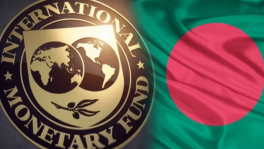A body artist
Young Olin believes it to be a form of art and way to connect with unknown people, their journey, and to their souls.

Tattoos are ‘cool’ and stylish. But is it only a fashion statement to get inked on the skin? Many would say it rather constitutes an ideology, a belief! Despite the initial negative portrayal, tattoos are not foreign in our land either, many indigenous groups do “ulki” which is a kind of tattoo too.
Eleven years in the business, young Olin believes it to be a form of art and way to connect with unknown people, their journey, and to their souls. TBS talked to Olin about his journey into the tattoo business.
What is your inspiration?
Both of my parents were artists. My father was a shoe designer and he left us very early in life, so my childhood was filled with struggles. Perhaps that’s the reason I was very different from other kids of my age. I used to express how I felt by myself tattooing with markers and
pens. At a certain point of my life I have suffered depression. In fact, during that time I learned that people will say whatever they want and I have to work the way I like.
Inspired by a TV show on tattooing – Miami Ink, after two years of self-learning, I professionally started tattooing since 2008.
What was your first experience of tattooing on others?
One day, one of my cousins told me to ink a tattoo on her arm, which was my first experience. When I was 16, I started creating tattoos professionally. But I maintained a policy of tattooing 18 plus people only. From then, there was no looking back.
Do you have your own style of inking?
When I started to make tattoos I realised that there is no art form and original symbols of our country for tattooing. Then I tried to do something that will represent Bangladesh. I really like Kazi Nazrul Islam very much for his rebellious writing. Therefore, I wanted to do something by writing his lines. Then one of my clients wanted to do something like this, so I talked to him about my idea. Everyone appreciated that work.

Someone got the map of Bangladesh, someone got the nightlife of Dhaka, and someone used a verse by Nazrul in calligraphy in Bengali. We call it “Bengali Style.”
How do you decide on a tattoo design with your clients?
When I started doing tattoos, I came to know different stories from different people, their journeys, life, obstacles, and learnt about how to put their emotions in the canvas of the skin. Everyone with different stories got different tattoos. And my clients’ stories are safe with me, I do not share them with others, or judge them. I try to talk to my clients before the attempt, try to know their ideology behind the design s/he has chosen. We discuss the idea in detail, and then we finalise the design.
If one of your works gets copied, how do you deal with it?
No one’s work should get copied. I try not to copy from any particular design or others’ ideas. If needed I do a consultation with my clients. If the tattoo is copied from somewhere it cannot be related to the person, then it creates a bad impression.
I used to get upset initially when in cases when someone copied my tattoo. Then I made my some kind of a peace with myself that if I work well, people will copy me and I would not be able to control that.
What do you plan to do with your tattoo art in future?
I believe, I’ll learn all through my life. So far, I want to incorporate my work with different cultures and styles. I’ll be visiting different countries to observe their style of tattooing and I’ll invite tattoo artists from other countries to visit my country too.


 Keep updated, follow The Business Standard's Google news channel
Keep updated, follow The Business Standard's Google news channel
















